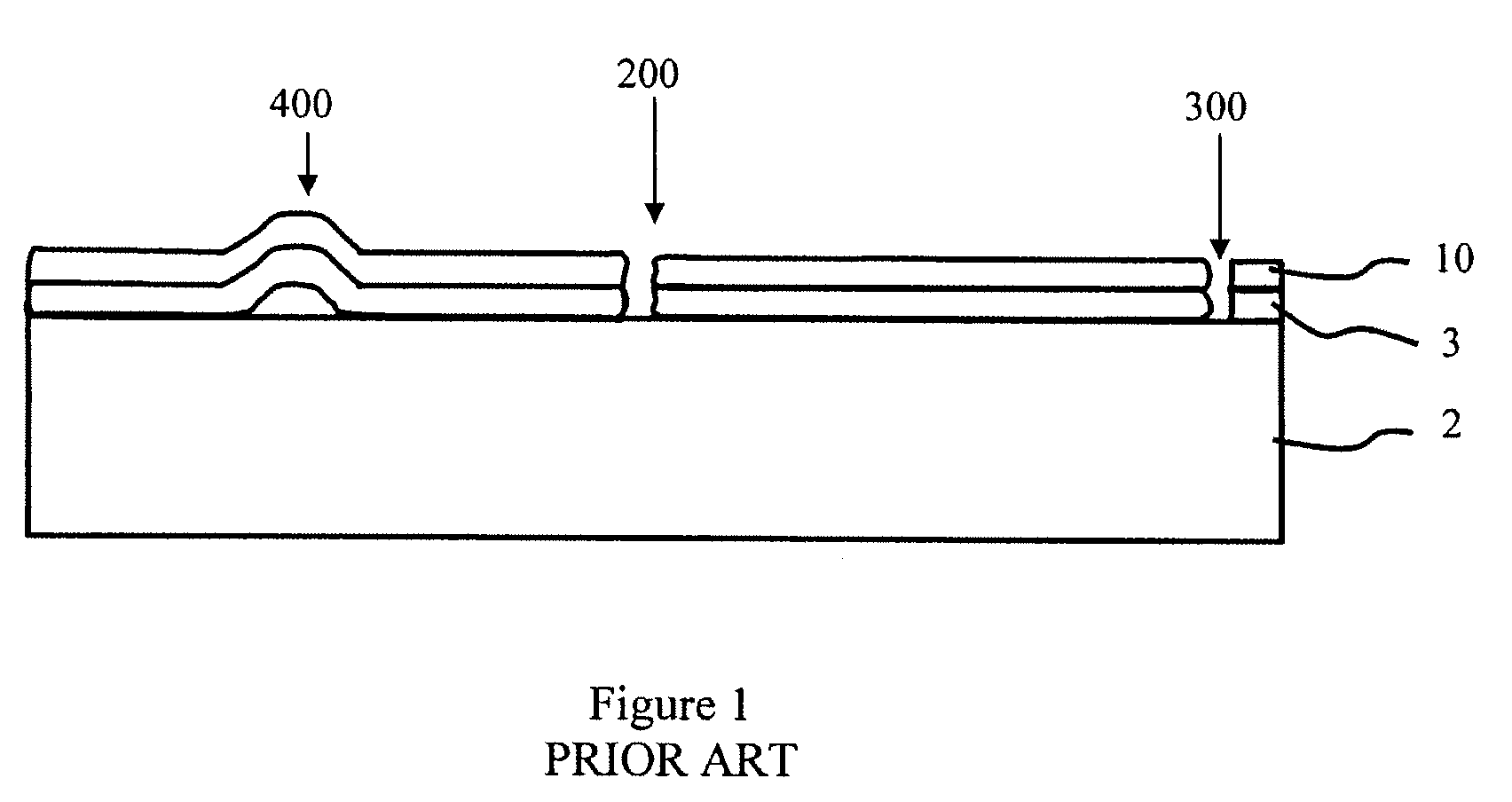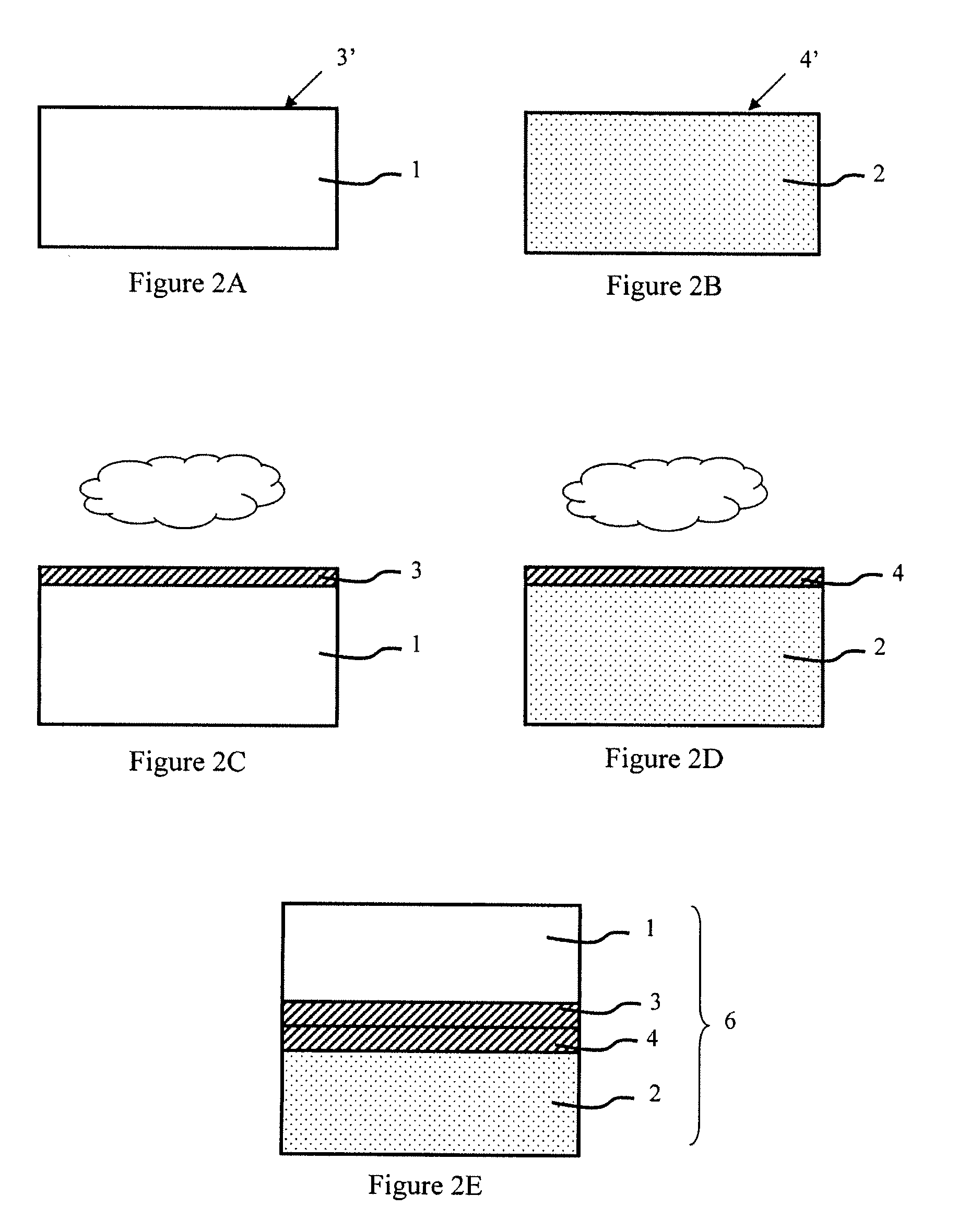Soi substrates with a fine buried insulating layer
a technology of buried insulating layer and substrate, which is applied in the direction of semiconductor/solid-state device manufacturing, basic electric elements, electric apparatus, etc., can solve the problems of numerous structural defects, indirect affecting the quality of the final substrate, and difficult molecular bonding
- Summary
- Abstract
- Description
- Claims
- Application Information
AI Technical Summary
Benefits of technology
Problems solved by technology
Method used
Image
Examples
first embodiment
[0042]There now follows a brief description of the different successive stages in a FIG. 2A represents a first semiconductor substrate 1 with a front face 3′, while FIG. 2B represents a second substrate 2 with a front face numbered 4′. Each of the front faces of the substrates 1 and 2 undergoes plasma treatment in accordance with FIGS. 2C and 2D. An insulating layer is deliberately not created on the surface of substrates 1 and 2 before they undergo the plasma treatment according to the invention. Furthermore, a native oxide layer resulting from exposure of the substrates to the ambient air may be present on the surface of these substrates.
[0043]Hence, the front face 3′ of the first substrate 1 is subjected to treatment based on oxidizing gas, such as oxygen, water or nitrogen protoxide, in order to create an insulating layer 3 on the surface of substrate 1. If the plasma oxidizing treatment is carried out with oxygen, the pressure range is around 5 to 200 mT, the power range aroun...
second embodiment
[0063]According to the example described previously, the first nitrided insulating layer 3 measuring 4 nm is brought into contact with the second insulating layer 4 of SiO2, which is 6 nm thick, so that the final structure 6 has an insulating layer with a final thickness of 10 nm. FIG. 5 shows a sectional view by transmission electron microscopy of this sort of final structure, in this case an UTBOX SOI substrate with a buried insulator 10 nm thick, obtained from the second embodiment according to the invention.
[0064]Optionally, the structure 6′ undergoes a finishing treatment involving at least one thinning and / or smoothing stage chosen from among dry or wet etching, oxidation / deoxidation, polishing and thermal treatment (such as Rapid Thermal Anneal (RTA) or long annealing in a neutral or reducing atmosphere).
third embodiment
[0065]In the third embodiment shown in FIGS. 4A to 4F, the weakened zone 5′ is made up of a porous layer obtained, for example, by a procedure known to the person skilled in the art as ELTRAN™ process. Hence, FIG. 3B shows the first substrate 1 including this porous layer 5′ defining a thin, so-called active layer 10 of a section 100 of the first substrate 1. As shown in FIG. 3C, the first substrate 1 is subjected to plasma treatment in an oxidizing atmosphere, in order to create an insulating layer 3 on the front face 3′ of the first substrate 1.
[0066]Prior to the plasma treatment stage of the first substrate 1 and before the latter is assembled with the second substrate 2, as shown in FIG. 4E, it is possible for an optional cleaning stage of surfaces 3′ and 4′ to be carried out. Bonding of the first substrate 1 and of the second substrate 2 is carried out by bringing the insulating layer 3 into close contact with the front face 4′ of the substrate 2. A thermal treatment may be app...
PUM
 Login to View More
Login to View More Abstract
Description
Claims
Application Information
 Login to View More
Login to View More - R&D
- Intellectual Property
- Life Sciences
- Materials
- Tech Scout
- Unparalleled Data Quality
- Higher Quality Content
- 60% Fewer Hallucinations
Browse by: Latest US Patents, China's latest patents, Technical Efficacy Thesaurus, Application Domain, Technology Topic, Popular Technical Reports.
© 2025 PatSnap. All rights reserved.Legal|Privacy policy|Modern Slavery Act Transparency Statement|Sitemap|About US| Contact US: help@patsnap.com



